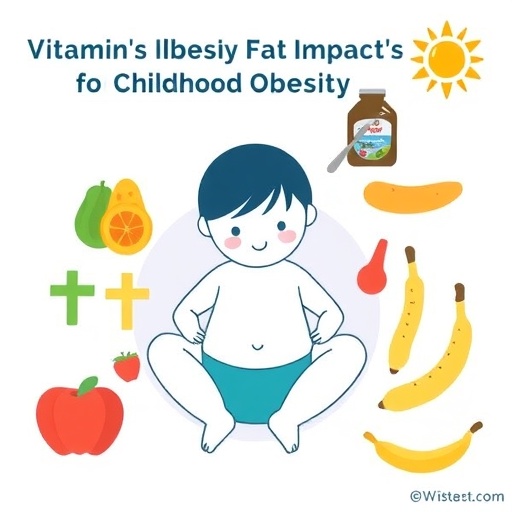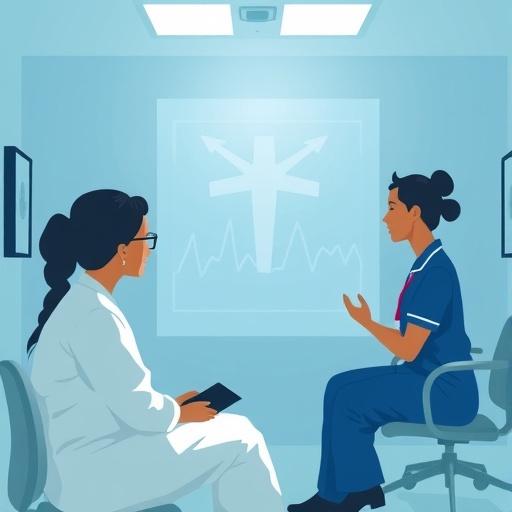Despite a recommendation for routine HPV vaccination of adolescents over 10 years, vaccination series completion rates remain less than 50% in the US

Credit: Pediatric Academic Societies
BALTIMORE – A new national survey of pediatricians and family physicians examines and compares how providers are recommending and communicating about human papillomavirus (HPV) vaccine, their current delivery practices, reported refusal/deferral rates and associated factors, and perceived barriers to vaccination. Findings from the survey will be presented during the Pediatric Academic Societies (PAS) 2019 Meeting, taking place on April 24 – May 1 in Baltimore.
“This was a national survey of pediatricians and family physicians assessing their practices regarding HPV vaccine delivery and their perceptions of the effect of changes from a three to a two-dose recommendation for adolescents younger than 15 years of age,” said Allison Kempe, MD, one of the authors of the study. “Our data are very encouraging in showing substantial progress over the past five years in the percent who report strongly recommending to 11 to 12-year-olds. Our findings also point out important areas for improvement in vaccine delivery, especially in how physicians introduce discussions about the vaccine and in the use of standing orders or alerts in the medical record.”
Despite a recommendation for routine HPV vaccination of adolescents for over 10 years, vaccination series completion rates remain less than 50% in the U.S. A variety of approaches to increase coverage have been proposed, focused at the practice or provider level, but approaches currently being used in primary care are not well described.
Although the majority of physicians strongly recommend HPV vaccine at 11 to 12 years old, data suggest areas for improvement in strength and style of recommendation and in practice-based delivery methods. The findings suggest that physicians reporting high refusal rates may be anticipating and accommodating refusals by altering recommendation strength and style.
Dr. Kempe added, “The findings also suggest that, from the physicians’ perspective, the two-dose schedule could result in meaningful increases in HPV vaccination initiation and completion among adolescents, leading to greater protection against HPV-associated cancers in the U.S.”
Dr. Kempe will present findings from “Current Primary Care Practices and Experiences with the Delivery of HPV Vaccine” on Monday, April 29 at 10:30 a.m. EDT. Reporters interested in an interview with Dr. Kempe should contact [email protected]. Please note that only the abstracts are being presented at the meeting. In some cases, the researchers may have additional data to share with media.
The PAS 2019 Meeting brings together thousands of pediatricians and other health care providers to improve the health and well-being of children worldwide. For more information about the PAS 2019 Meeting, please visit http://www.
###
About the Pediatric Academic Societies Meeting
The Pediatric Academic Societies (PAS) Meeting brings together thousands of pediatricians and other health care providers united by a common mission: to improve the health and well-being of children worldwide. This international gathering includes pediatric researchers, leaders in pediatric academics, clinical care providers and community practitioners. Presentations cover issues of interest to generalists as well as topics critical to a wide array of specialty and sub-specialty areas. The PAS Meeting will be the premier North American scholarly child health meeting. The PAS Meeting is produced through a partnership of four pediatric organizations that are leaders in the advancement of pediatric research and child advocacy: American Pediatric Society, Society for Pediatric Research, Academic Pediatric Association and American Academy of Pediatrics. For more information, please visit http://www.
Abstract: Current Primary Care Practices and Experiences with the Delivery of HPV Vaccine
Background: Despite a recommendation for routine HPV vaccination of adolescents for >10 years, vaccination series completion rates remain
Objective: To examine and compare among nationally representative panels of pediatricians (Peds) and family physicians (FPs): 1) how providers are recommending and communicating about HPV vaccine; 2) current delivery practices; 3) reported refusal/deferral rates and associated factors; and 4) perceived barriers to vaccination.
Design/Methods: We surveyed nationally representative networks of Peds and FPs by internet or mail from 7/2018-9/2018. Multivariable regression (MV) analyses were conducted assessing factors associated with reported refusal/deferral of greater than or equal to 50% for 11-12 y.o.
Results: The response rate was 65% (588/908); after excluding 5% of Peds and 16% of FPs not administering HPV vaccine, analyses included 302 Peds and 228 FPs. Peds strongly recommending HPV vaccine ranged from 98% for greater than or equal to 15 y.o. to 83% for 11-12 y.o.; FPs ranged from 83% for greater than or equal to 15 y.o. to 66% for 11-12 y.o. (p<.0001 providers most frequently discussed prevention of cancers and genital warts peds fps reported always using a presumptive style when discussing hpv vaccine overall used standing orders had system for identifying those needing vaccination flagging system. both specialties high rates refusal y.o. all age groups mv analyses demonstrated that greater than or equal to at was associated with not recommending in this group ratio confidence interval perceiving less resistance introducing rather barriers included misinformation parents receive from social media concerns about safety>
Conclusion(s): Although the majority of physicians strongly recommend HPV vaccine at 11-12 y.o., our data suggest areas for improvement in strength and style of recommendation and in practice-based delivery methods. Our data suggest that physicians reporting high refusal rates may be anticipating and accommodating refusals by altering recommendation strength and style.
Authors/Institutions: Allison Kempe, Sean O’Leary, Lori Crane, Laura Hurley, Michaela Brtnikova, Brenda Beaty, ACCORDS University of Colorado Anschutz Medical campus and Children’s Hospital Colorado; Lauri Markowitz, Elisa Meites, Shannon Stokley, Megan Lindley, Centers for Disease Control & Prevention
Media Contact
PAS
[email protected]




